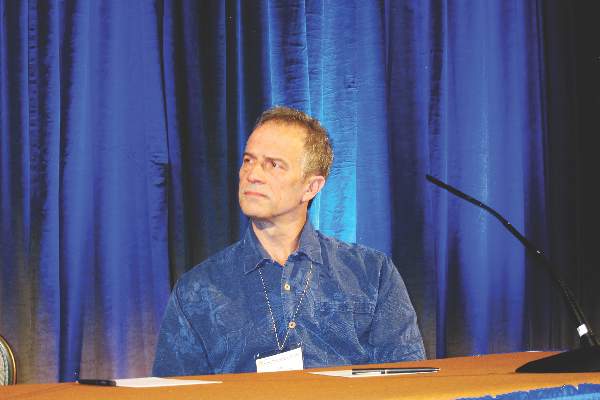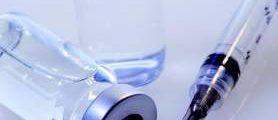EXPERT ANALYSIS FROM SDEF HAWAII DERMATOLOGY SEMINAR
WAIKOLOA, HAWAII (FRONTLINE MEDICAL NEWS) – Generations of master clinicians in dermatology have made a practice of accumulating personal collections of obscure, non–evidence-based therapies for use when standard treatments aren’t getting the job done for challenging conditions.
Sometimes these dermatologic masters share them, as in the ‘what to do when you don’t know what to do’ compendium in Shelley and Shelley’s classic textbook, Advanced Dermatologic Therapeutics.
At the Hawaii Dermatology Seminar, Dr. Robert Sidbury opened his own little black book and shared several such backup pediatric dermatology therapies. All are off label. Their mechanisms of benefit are unclear. Formal supporting evidence is sparse to none. Some are time-honored therapies; indeed, one is a variant of Vleminckx’s solution, a popular treatment for severe nodulocystic acne in 1880. But these are all treatments Dr. Sidbury has personally found to be successful on repeated occasions as second-, third-, and fourth-line therapies, and he said he knows of other pediatric dermatologists with similarly favorable experiences using these agents.
“These just might be something to reach for when you’re out of options otherwise,” he explained at the seminar provided by Global Academy for Medical Education/Skin Disease Education Foundation.
“The gist of this talk is to help you realize what a gold mine your own experience and judgment is in trying to treat patients whose condition is stubborn. Sometimes we have a natural resistance to wanting to try things such as we’re talking about here, where there isn’t any supporting evidence. But if you can wrap your mind around the safety – if you’re comfortable with that – then I would encourage you to be more adventuresome,” said Dr. Sidbury, chief of dermatology at Seattle Children’s Hospital.
Among his go-to, last-resort recommendations are the following:
Griseofulvin for cutaneous or oral lichen planus. “I use tinea dosing: 20 mg/day in two divided doses, up to a maximum of 500-1,000 mg/day. I tend to give it for 1-2 months. I don’t follow labs when using griseofulvin for tinea or lichen planus,” he said.
This treatment is cited in the Shelleys’ textbook as well as in a recent systematic review and meta-analysis ( Am J Clin Dermatol. 2016 Feb;17[1]:11-22 ).
Ketotifen for intractable itching. Dr. Sidbury calls pruritus of this severity “rogue itching,” which is not uncommon in patients with plexiform neurofibromas, very large keloids, or epidermolysis bullosa. “I’ve found ketotifen to be incredibly helpful when absolutely nothing else seems to help,” he said.
Ketotifen, an oral antihistamine, is a histamine-1 blocker and mast cell stabilizer. It’s not approved by the Food and Drug Administration but is available from Canada. Dr. Sidbury said he has found Northwest Pharmacy easy to work with online. The cost through that online pharmacy is $52 per 250 mL.
The oral dosing is 0.05 mg/kg twice a day in children aged 6 months up to 3 years, and 1 mg twice a day in children aged 3 years and older. He and others have found ketotifen to be extremely safe. Side effects are uncommon and consist of minimal sleep disruption, irritability, flulike symptoms, and weight gain.
Topical tofacitinib for alopecia areata. Tofacitinib (Xeljanz) is an oral Janus kinase inhibitor (JAK) approved for the treatment of rheumatoid arthritis. Dr. Sidbury has a compounding pharmacy make topical tofacitinib 2% in a liposomal base, which achieves better penetration than Versabase. He recommends Chemistry Rx in Philadelphia for compounding.
“I have no financial interest, I’ve just found them incredibly helpful. The cost is $330 for 30 g. That’s not dirt cheap by a long shot, but I’ve looked into this for parents before I was aware of the Chemistry Rx option, and the cost was thousands and thousands of dollars when I tried to get it compounded in a local pharmacy that didn’t have the economy of scale,” he said.
Patients apply the topical JAK inhibitor twice daily. “I’ve probably got six or seven kids on topical JAK inhibitor therapy for alopecia areata, and I’ve seen responses in all of them after having pretty much exhausted everything else,” according to the dermatologist.
He said he obtains a baseline CBC, liver enzyme levels, serum creatinine, and lipid levels, repeating the lab tests every 2 weeks initially, then monthly.
Vleminckx’s solution. This is a truly old school therapy for severe nodulocystic acne when isotretinoin isn’t an option. True Vleminckx’s solution is a sulfurated lime solution that smells terrible and is hard to come by. The closest thing Dr. Sidbury has found without resort to a compounding pharmacy is available OTC on Amazon. Thankfully, it contains an odor-masking agent, he said. He has patients apply the solution twice daily for 20 minutes at a time every other day. Tar for vitiligo and lichen sclerosis. Vitiligo is a condition with a long list of treatment options, many of which aren’t all that effective. Dr. Sidbury learned of V-tar for vitiligo from Dr. Peter Lio, a pediatric dermatologist at Northwestern University, Chicago, who prescribes it frequently for stubborn areas, such as the knees and ankles. V-tar is a 30% crude coal tar product that’s water soluble. Patients apply a small amount once per week, and wash it off after 6-8 hours. V-tar is available from Dermasave Labs, a compounding pharmacy in Pleasant Valley, N.Y., he said.
For cases of lichen sclerosus where potent topical corticosteroids and topical calcineurin inhibitors are ineffective, he turns to twice-daily 6% liquor carbonis detergens in Aquaphor. It has an excellent safety profile. Irritation is rare and can be prevented using a barrier cream.
Fluconazole for erythema annulare centrifugum. Dr. Sidbury has used this on multiple occasions when standard therapy with antihistamines, topical steroids, topical calcineurin inhibitors, and/or calcipotriene didn’t work. At 3-6 mg/kg per day for 4 weeks, and a maximum daily dose of fluconazole of 200 mg, he has typically obtained a rapid reduction in itching, and skin clearance in about a week, with a sustained benefit.
This is another off-label treatment with a good safety profile, which he also frequently uses on label for neonates with candidiasis, Dr. Sidbury noted.
He reported having no financial conflicts regarding any of these therapies. SDEF and this news organization are owned by the same parent company.




